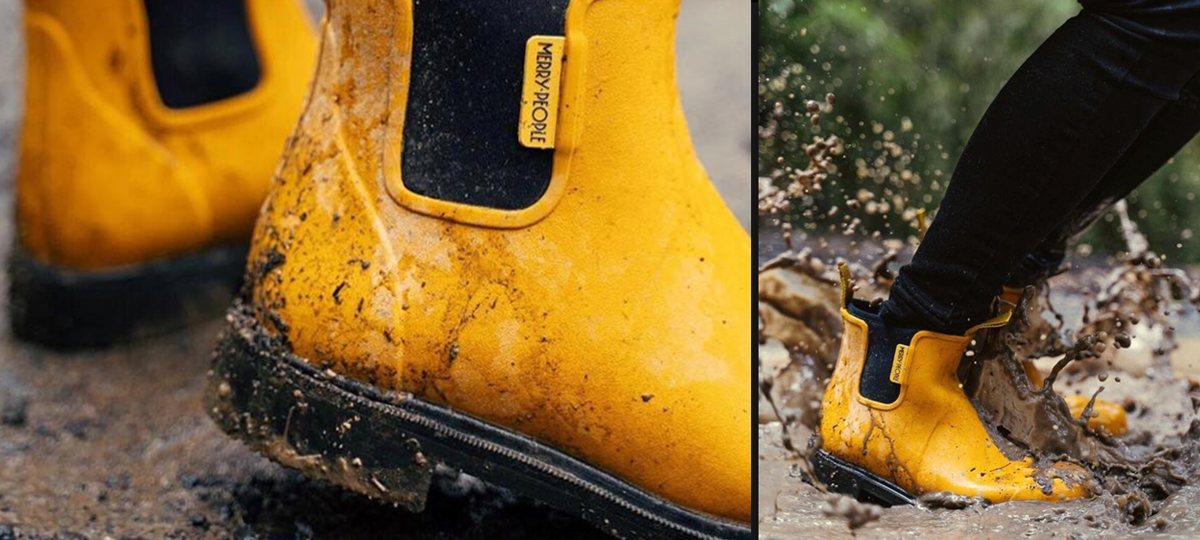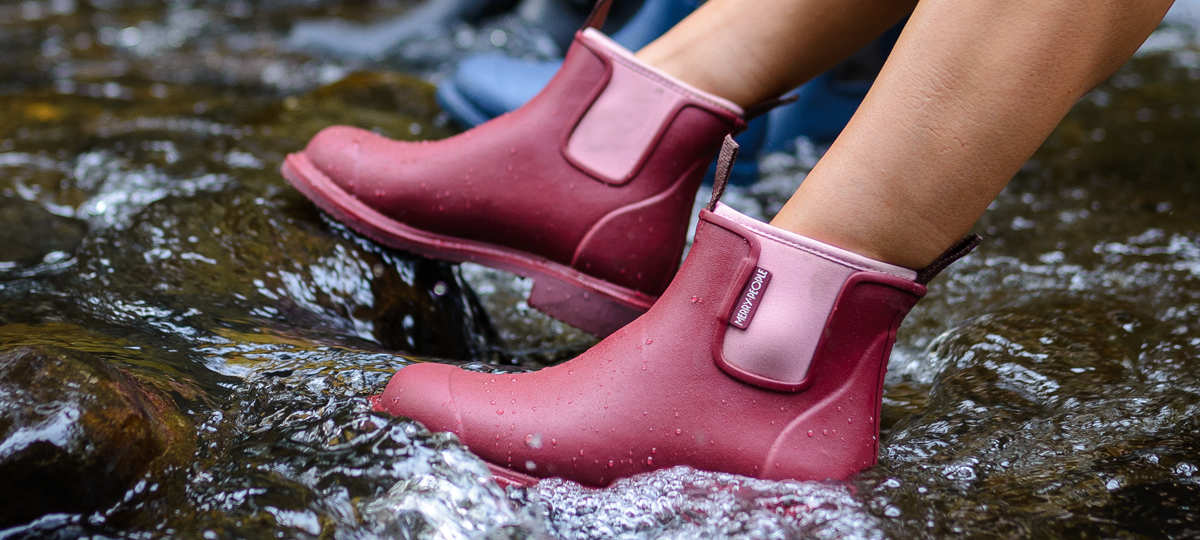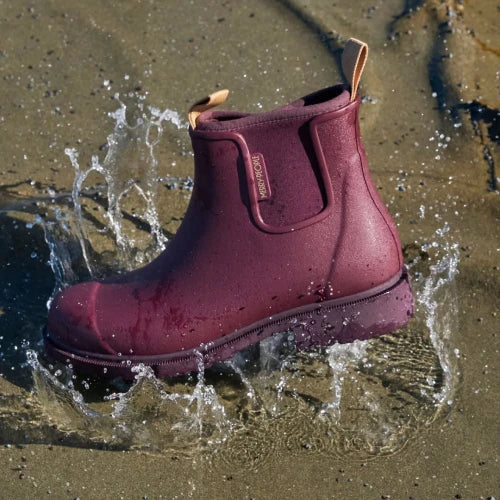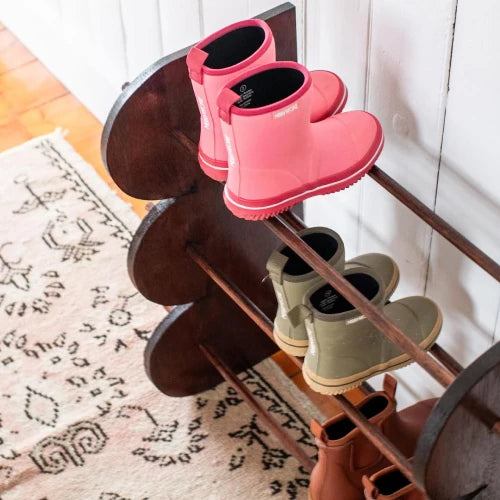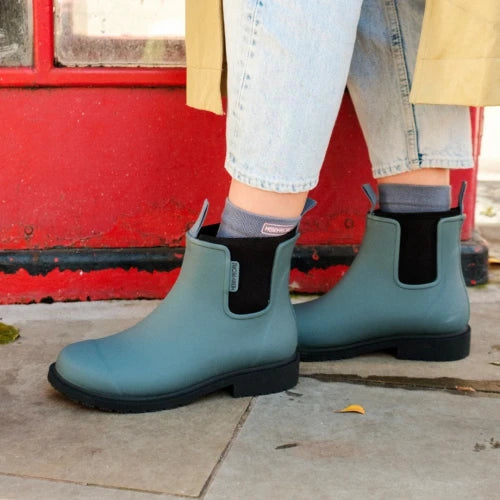Wellington boots are a handy footwear item to have. They allow you to trudge through wet mud or snow, knowing your feet will remain safe and dry. But in using them for their intended purpose out in the elements, it is inevitable they will get dirty. Hence, they will need to be cleaned regularly.
So, what is the best way to go about this? Fortunately, there are a variety of methods you can choose from to care for your wellington boots safely and keep them looking like new. And even more, fortunately, most of the products you can use for cleaning are likely already found within your home.
Dishwashing Liquid
Not just good for washing dishes, dishwashing liquid can of course be used for other things. A good mix is one tablespoon in two cups of warm water. Dip a cloth in and, as with the above mentioned methods, always wash your boots from top to bottom and afterwards wipe them clean with plain water. Dishwashing liquid is also good for removing mould from your boots if needed.
Silicone Oil
Using a good quality silicone spray or oil like found in our Merry People Care Kit does wonders for protecting and moisturising your boots. This will prevent them from cracking when going from wet to dry conditions and helps to repel the water. Spray a small amount of silicone spray over the boots and then gently rub in with a microfibre cloth. Allow to dry and repeat if they still feel dry. Then buff and shine with the silicone oil applicator sponge. Be careful not to apply to the soles of the wellies as this may cause a slipping incident.
Vinegar
It is no secret that vinegar is a useful cleaning product. When using vinegar to clean your rain boots, it is very important to remember to water it down. Applying undiluted vinegar can damage and discolour your boots. One tablespoon of white vinegar in one cup of warm water is usually all you will need. You need to ensure you mix the solution thoroughly and use a clean cloth to apply it. Clean your boots from top to bottom and then wipe them down again with another clean cloth and some plain water.
Vinegar is also handy for removing tough stains from your boots. You may be tempted to use a less diluted vinegar solution, but a word of caution: this can be a mistake, as strong vinegar solutions can damage your boots. For tough to clean spots and stains, simply use the same diluted concentration of vinegar and rub the cloth a little harder over the stained areas. Patience and persistence will pay off.
Baking Powder
Another well known homemade cleaning product is a baking powder solution. Not only is it powerful, but it is also gentle. And you can make solutions of varying strength depending on your cleaning needs. Usually, one teaspoon of baking powder dissolved in one cup of warm water should be enough. But for tougher stains, and especially caked on dirt and mud, you can use less water to create a more concentrated paste which you can use to scrub the boots. As with the vinegar method, you should clean them from top to bottom and then wipe the boots with a cloth and plain water.
Washing Machine
It is tempting to just want to throw your rain boots in the washing machine as it may seem easier, however, this is not advisable. While their exterior may be sturdy, they are not designed to be washed in a machine. This can damage them, both the interior and exterior. That’s why it is always best to wash them by hand, then you can give them a thorough clean without risking damage.
Washing The Inside Of Your Rain Boots
To wash the inside of your boots, you want to choose a shampoo that is low-pH, and gently clean them by hand. This will prevent damaging the material inside. Use a damp cloth and mix the shampoo with some warm water to create a soapy solution. Once the smell of the shampoo is gone, use a cloth dampened with plain, clean water to remove any shampoo residue still clinging to the inside lining.
Drying Your Wellington Boots
After washing your wellies, you will need to dry them. The best method for this is setting them aside somewhere to air dry. You should avoid leaving them outside, and also not place them close to a direct heat source. Patience is key when drying your boots, as they will take quite some time to dry completely. But you must let them fully dry before wearing them or storing them, as otherwise, you risk accidentally allowing mould to grow inside your boots.
Removing Scratches Or Scuffs From Your Rain Boots
When wearing your sturdy rain boots, it is almost inevitable they will get scratches and scuffs. This can be frustrating and even upsetting. Fortunately, there is a very easy solution. This handy little life hack is a surprisingly simple, cheap, and effective method that uses something found in almost every household, a pencil eraser. Simply rub the scuff or scratch with the eraser, pausing in between to gently wipe away the excess eraser shavings with a dry cloth as needed. Keep going until the scratch or scuff is gone, then clean and dry your boots as normal, using one of the methods outlined above.
Getting The Shine On Your Wellies Back
Over time, the shine on your boots may fade. Never fear, you can get it back easily. Simply clean your boots as normal, using one of the above methods, then rub them with some olive oil. Use a clean cloth to gently rub it all over the outside, then set aside and allow to dry. Your rain boots will have their shine back in no time.


